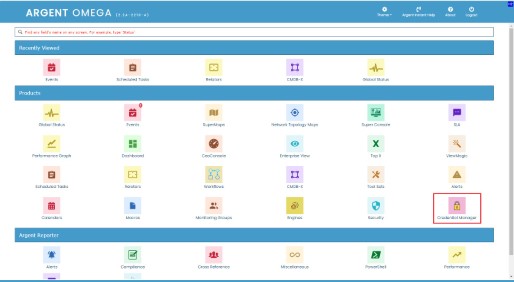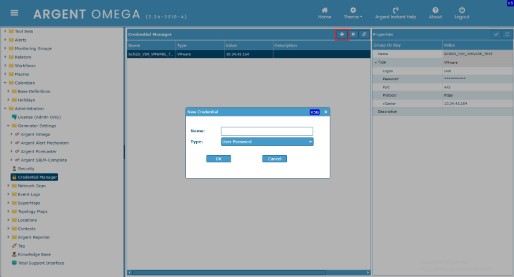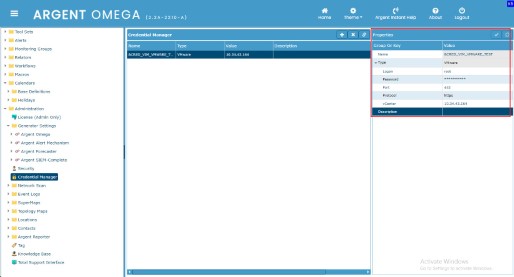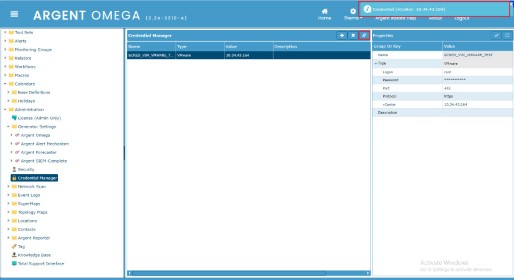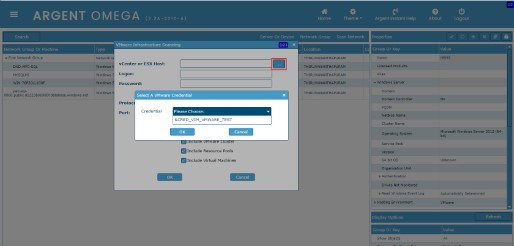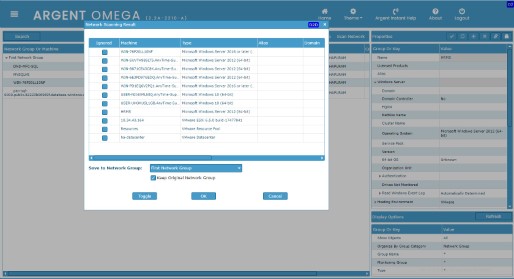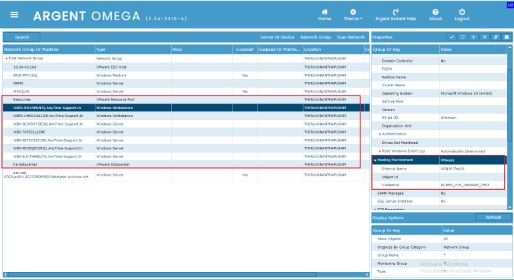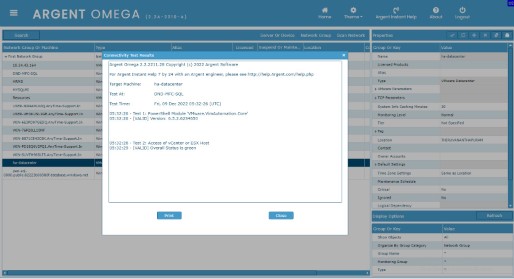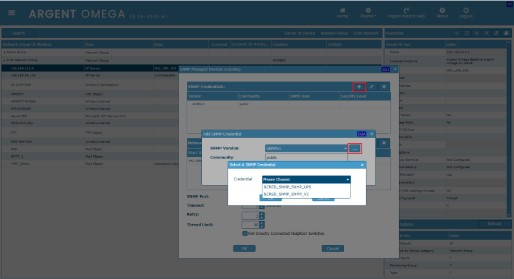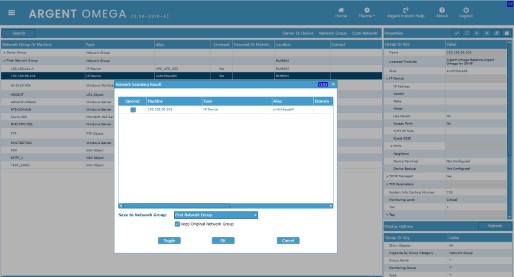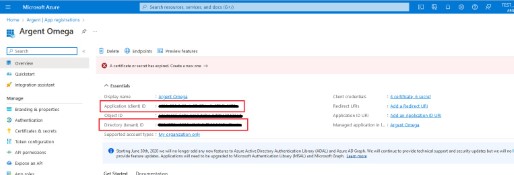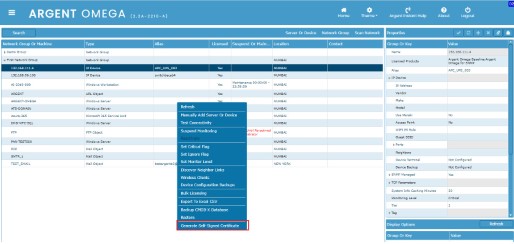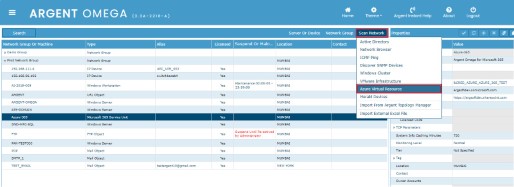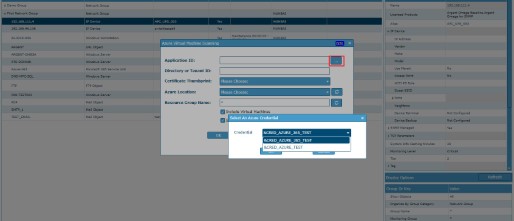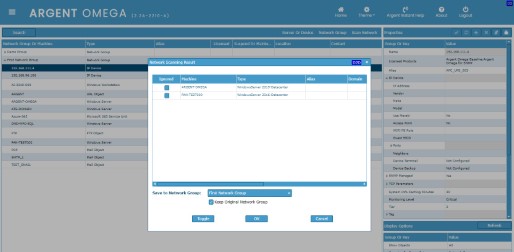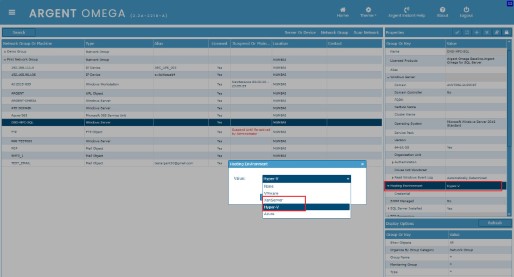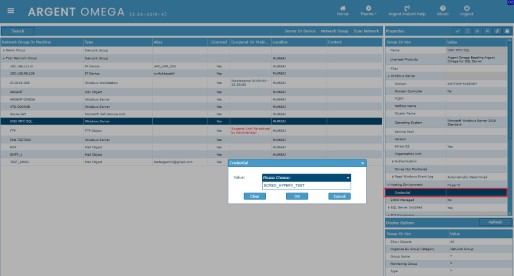KBI 312033 Enhancement: New Feature Credential Manager In Argent Omega
Version
Argent Omega 2.2A-2301-A and above
Date
Thursday, 29 December 2022
Summary
Credential Manager in Argent Omega lets you create and manage login credentials. The following types of credentials can be defined and managed in Argent Omega:
- User/Password
- VMware
- XenServer
- Hyper-V
- SNMP
- Azure Active Directory
Use these credentials in CMDB-X and Network Scanning. The technical section explains how to define credential in Credential Manager and use the same.
Technical Background
You can use the credentials in CMDB-X including Node Properties, Connectivity Test and Network Scanning.
Click on Credential Manager Home menu item in Argent Omega.
You will be redirected to the Credential Manager page. Click on the ‘+’ button to create a new credential:
Need to specify the credential Name and Type.
There are Rename, Copy, Delete, Import and Export options:
To create and use VMware credential, specify credential name, then select VMware type from Type combo box and click OK button.
Specify Logon, Password, Port, Protocol, vCenter, and Description in credential properties window on right pane.
Then save the details by clicking Save Changes button in top right.
Click Test button to validate the credential. The notification message in the top right shows the test result.
Use this VMware credential in CMDB-X for VMware Infrastructure Scanning.
Navigate to CMDB-X then click on Scan Network -> VMware Infrastructure dropdown menu item:
VMware Infrastructure Scanning dialog will be popped up. Click on browse button besides the vCenter or ESX Host field to bring the VMware credential defined in Credential Manager.
Select the VMware credential from the credential list and click OK to start the scanning of VMware objects.
Scan result will be displayed in a list when scanning is finished.
Pick the objects from scanning result and click OK to save it to CMDB-X.
You can do the connectivity test of scanned machines:
Same way you can use the SNMP type credential defined in Credential Manager to Discover SNMP devices. Click on Scan Network -> Discover SNMP Devices dropdown menu item.
SNMP Managed Devices Scanning dialog will be popped up. Click on ‘+’ button to add a new credential and click browse button besides the SNMP Version field in Add SNMP Credential dialog to bring the defined SNMP credential.
The SNMP details saved in the selected credential will be auto filled in the corresponding fields after selecting credential from combo box.
Click OK to start the scanning of SNMP devices. Scanned result will be displayed in a list when scanning is finished.
Pick the objects from scanning result and click OK to save it to CMDB-X.
The following details must be specified in Azure Active Directory type credential definition in Credential Manager.
Your Application Id and Directory Or Tenant Id can be copied from Enterprise App definition screen in Azure portal.
You can upload the Self-Signed Certificate to Enterprise App get the Certificate Thumbprint. You can use the Generate Self-Signed Certificate context menu option in CMDB-X to generate self-signed certificate:
The certificate will be generated in .cer format and will be saved in browser’s default download folder. Upload this certificate to Enterprise App’s Certificates & secrets section to generate Certificate Thumbprint
Use Azure Active Directory type credential to scan Azure Virtual Machines and SQL Management Instances. Navigate to CMDB-X then click on Scan Network -> Azure Virtual Resource dropdown menu item
Azure Virtual Machine Scanning dialog will be popped up.
From the Azure Virtual Machine Scanning popup dialog, click on browse button besides the Application ID field to bring the defined Azure Active Directory credential.
Select the credential and click OK to start the scanning of Azure Virtual Machines and SQL Management Instances. Scan result will be displayed in a list when scanning is finished.
Pick the objects from scanning result and click OK to save it to CMDB-X.
Same way use the XenServer or Hyper-V type credential in the Hosting Environment properties section in CMDB-X to configure the hosting environment of selected Virtual Machine.
Then select the corresponding credential defined in Credential Manager:
Resolution
Upgrade to Argent Omega 2.2A-2301-A or above
